Idea by
Mascha Kremer, Yue Mao
Maria Kremer
Call for ideas 2020
Retelling Vyborg
Retelling Vyborg

- Site-specific cases
Historically, Vyborg is an indispensable part of Finnish culture, reflected by its urban fabrics and architecture. But in 1944, it changed hands to Russia. As outside researchers, we share our investigation of Vyborg; meanwhile, we invite locals to tell their memories and imaginaries.
We find relations between social activities from different times and recreate them in a one day festival, with 4 installations + performative acts in the city. Histories are approached from macro perspective, such as political beliefs, to human perspective, such as workers life and mythologies.
By creating alternative narratives of the past via collective memories, we open up contextualized approaches towards future architecture. The participatory process experiments how controversial histories can be critically and constructively discussed through spatial and performative interventions.
‘Retelling Vyborg’ is under co-development with the locals, the site-specific actions will happen in April 2020.
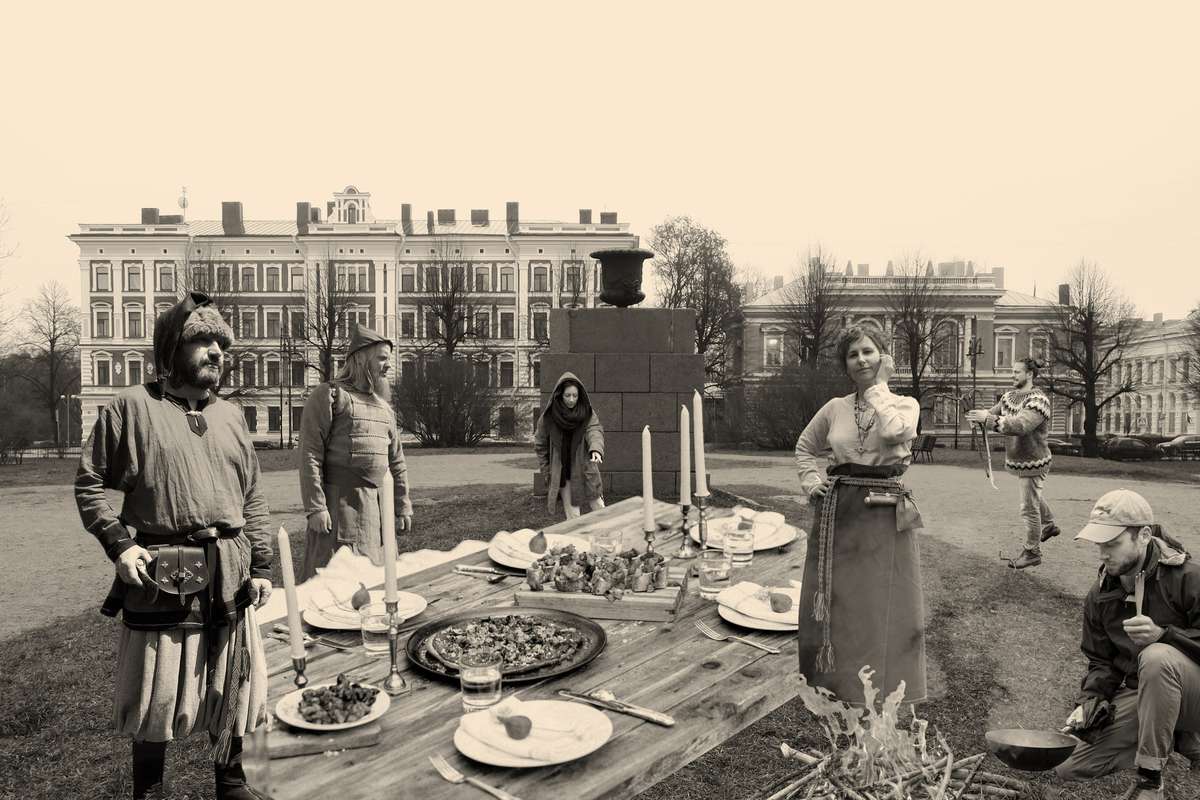
At The foundation of the Vyborg New Cathedral, a table is set for a celebration meeting of the merchants in 15th century. The site is the monument for the New Cathedral, built in 1890s, bombed and demolished in 1940s. Religious life and merchant life are put under the same frame, to acknowledge merchant life as an important factor for the dynamic city life in Vyborg, and to rethink the meaning of religion in people’s everyday life.
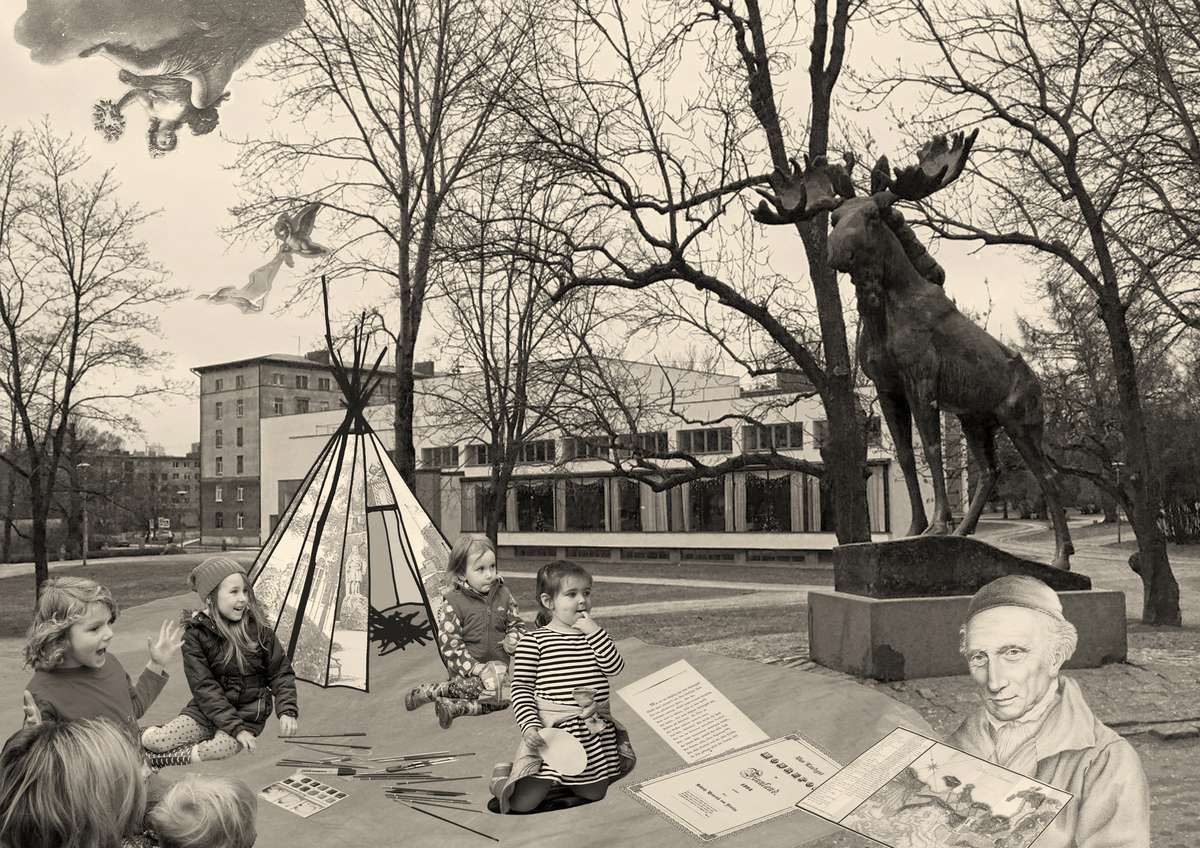
At the Elk Statue in front of the iconic Vyborg Library designed by Alvar Aalto, A tent is built next to it, with drawings about the local legends printed on the shell. A storytelling workshop is host to introduce and add more imaginaries to the legends about the Hiisi's elk in Finnish epic Kalevala, and legends from Monrepos Park Museum-Reserve, written by the first park owner Baron Ludwig Heinrich von Nicolay in 1800s.
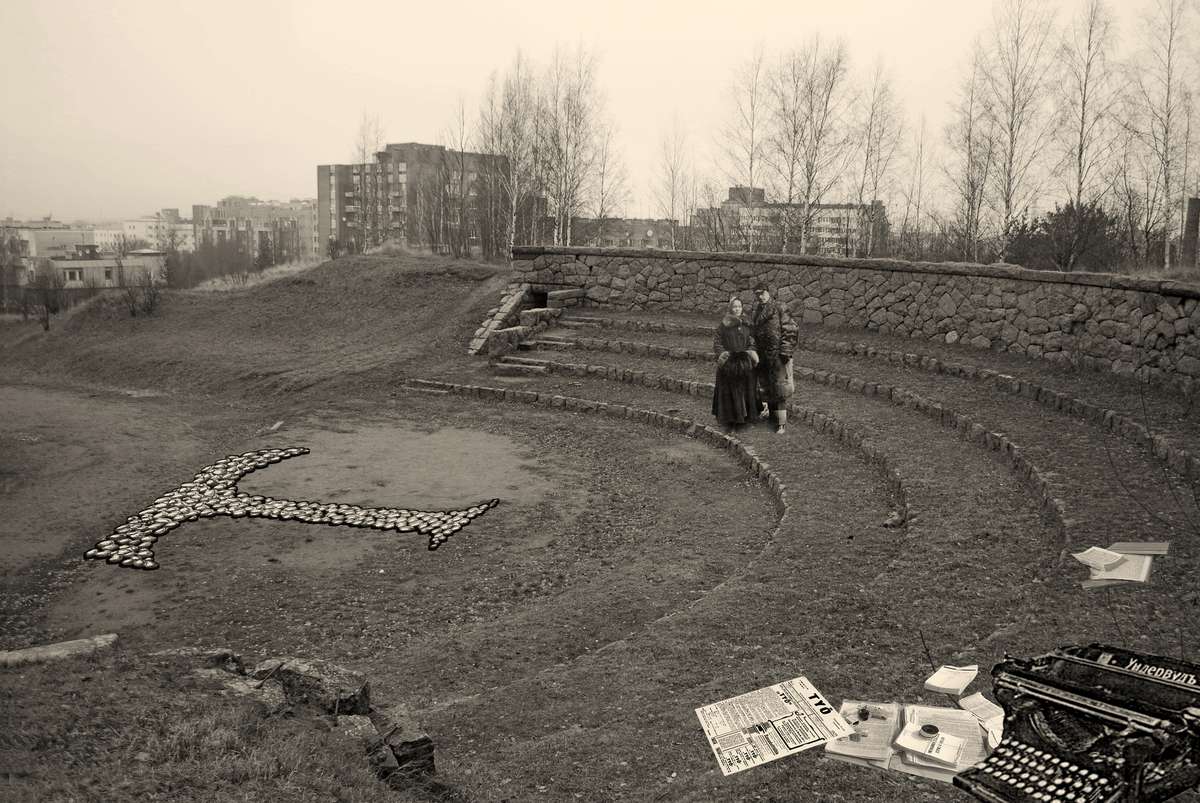
At the summer theater built by Uno Ullberg in the 1930s, a scene of workers’ newspaper production in early 20th century is recreated. A stone-composed ‘T’ is placed to represent the union’s newspaper TYÖ (Finnish: labour), and to resonate with the stone ruins in the surroundings. The Haarala couple, active Finnish workers and former owners of the nowadays House Museum of Lenin in Vyborg, will guide the participants to make a new newspaper with clips of local histories and news.

At a courtyard offered by local developer and cultural hobbyist Sergei, a pop-up festival is organized to celebrate the day. A long communal table is built for the participants to draw the stories told during the day, along with a tea party. The courtyard is accessed through two arcades from each side, sound installations are placed in the arcades to play recordings from the city environment and our talks with citizens.

A stone-composed ‘T’. Hand drawing.
Retelling Vyborg
Retelling Vyborg

- Site-specific cases
Historically, Vyborg is an indispensable part of Finnish culture, reflected by its urban fabrics and architecture. But in 1944, it changed hands to Russia. As outside researchers, we share our investigation of Vyborg; meanwhile, we invite locals to tell their memories and imaginaries.
We find relations between social activities from different times and recreate them in a one day festival, with 4 installations + performative acts in the city. Histories are approached from macro perspective, such as political beliefs, to human perspective, such as workers life and mythologies.
By creating alternative narratives of the past via collective memories, we open up contextualized approaches towards future architecture. The participatory process experiments how controversial histories can be critically and constructively discussed through spatial and performative interventions.
‘Retelling Vyborg’ is under co-development with the locals, the site-specific actions will happen in April 2020.
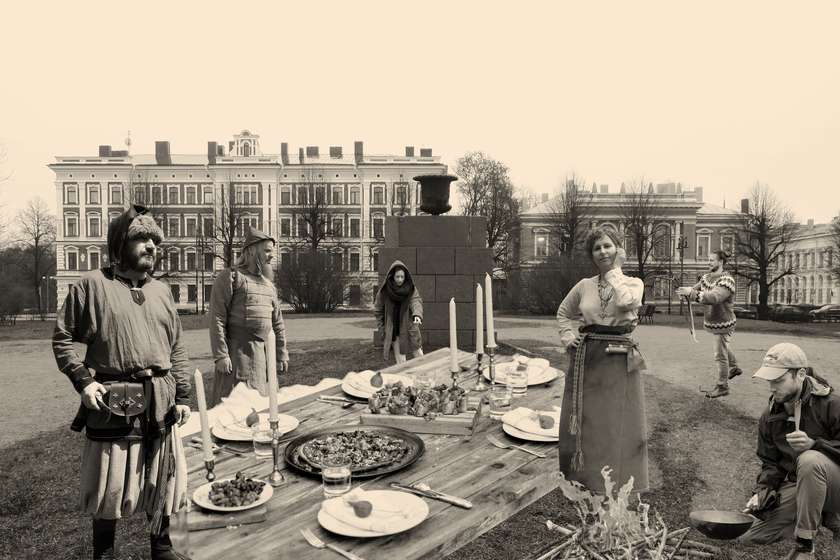
At The foundation of the Vyborg New Cathedral, a table is set for a celebration meeting of the merchants in 15th century. The site is the monument for the New Cathedral, built in 1890s, bombed and demolished in 1940s. Religious life and merchant life are put under the same frame, to acknowledge merchant life as an important factor for the dynamic city life in Vyborg, and to rethink the meaning of religion in people’s everyday life.
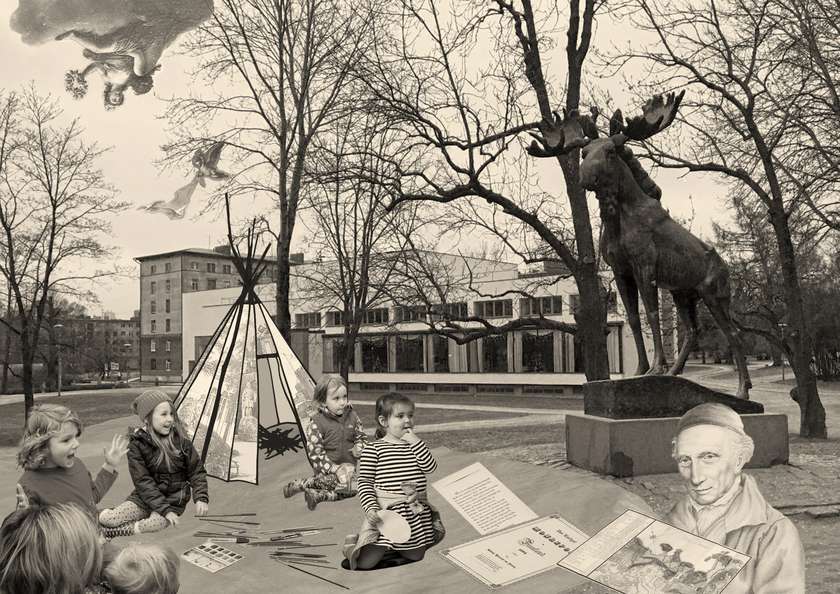
At the Elk Statue in front of the iconic Vyborg Library designed by Alvar Aalto, A tent is built next to it, with drawings about the local legends printed on the shell. A storytelling workshop is host to introduce and add more imaginaries to the legends about the Hiisi's elk in Finnish epic Kalevala, and legends from Monrepos Park Museum-Reserve, written by the first park owner Baron Ludwig Heinrich von Nicolay in 1800s.
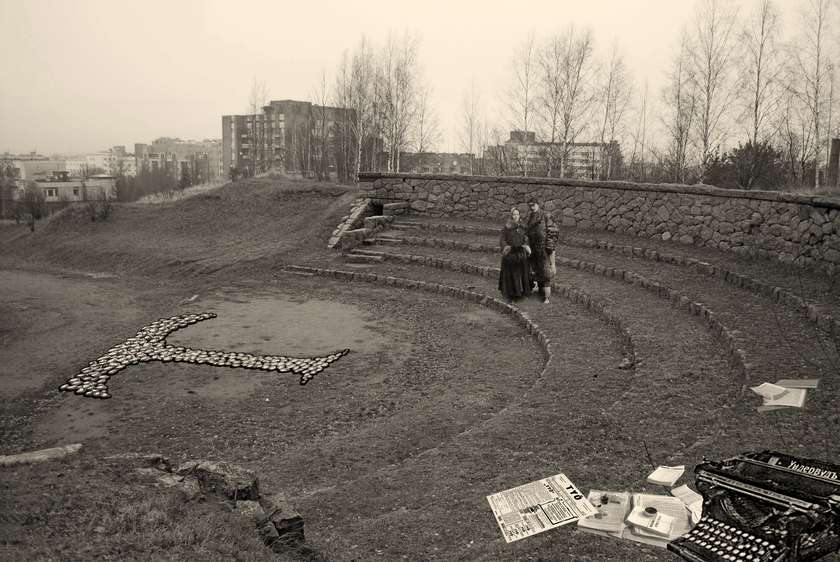
At the summer theater built by Uno Ullberg in the 1930s, a scene of workers’ newspaper production in early 20th century is recreated. A stone-composed ‘T’ is placed to represent the union’s newspaper TYÖ (Finnish: labour), and to resonate with the stone ruins in the surroundings. The Haarala couple, active Finnish workers and former owners of the nowadays House Museum of Lenin in Vyborg, will guide the participants to make a new newspaper with clips of local histories and news.
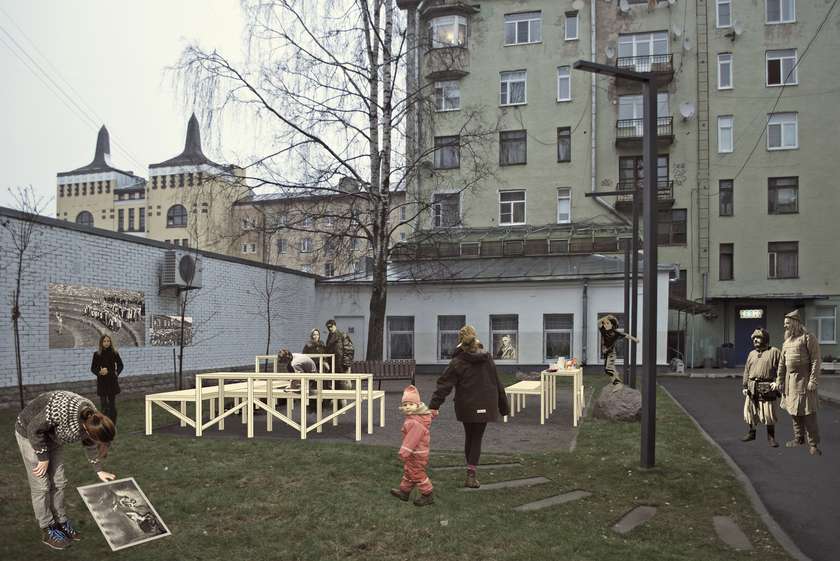
At a courtyard offered by local developer and cultural hobbyist Sergei, a pop-up festival is organized to celebrate the day. A long communal table is built for the participants to draw the stories told during the day, along with a tea party. The courtyard is accessed through two arcades from each side, sound installations are placed in the arcades to play recordings from the city environment and our talks with citizens.
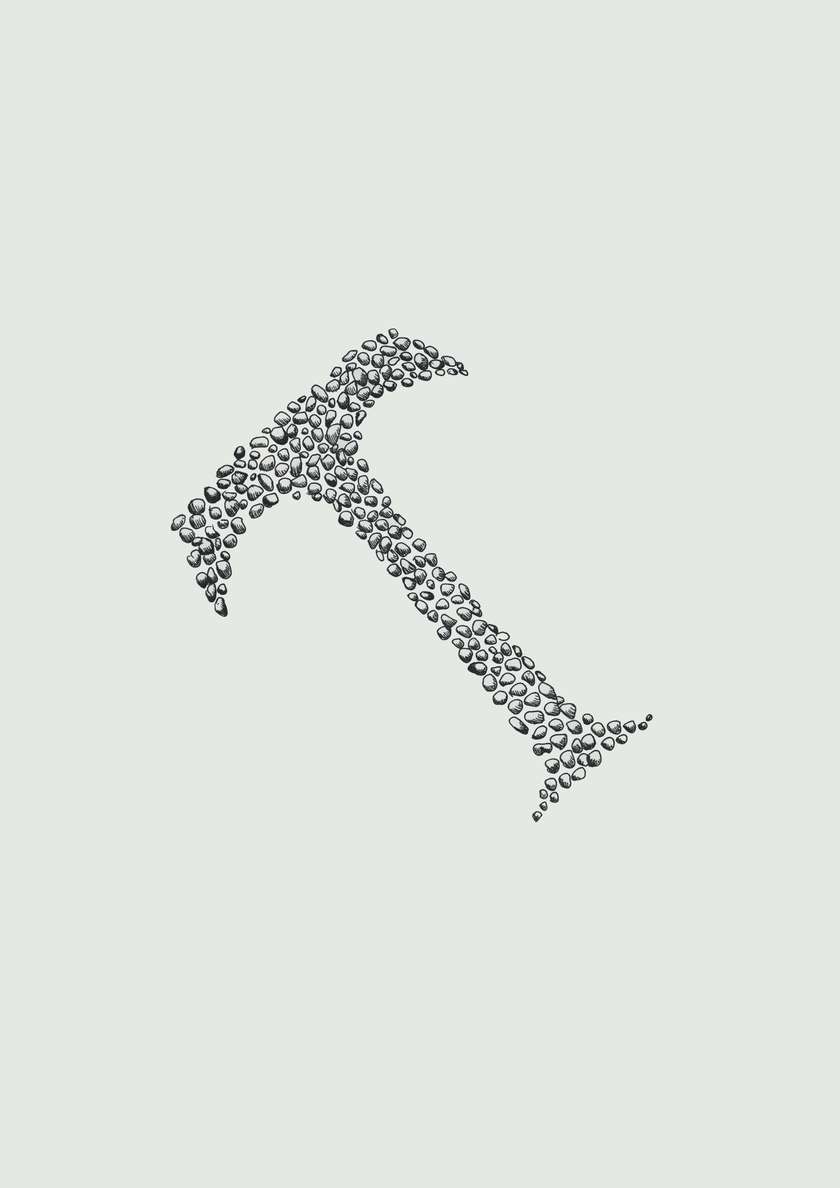
A stone-composed ‘T’. Hand drawing.